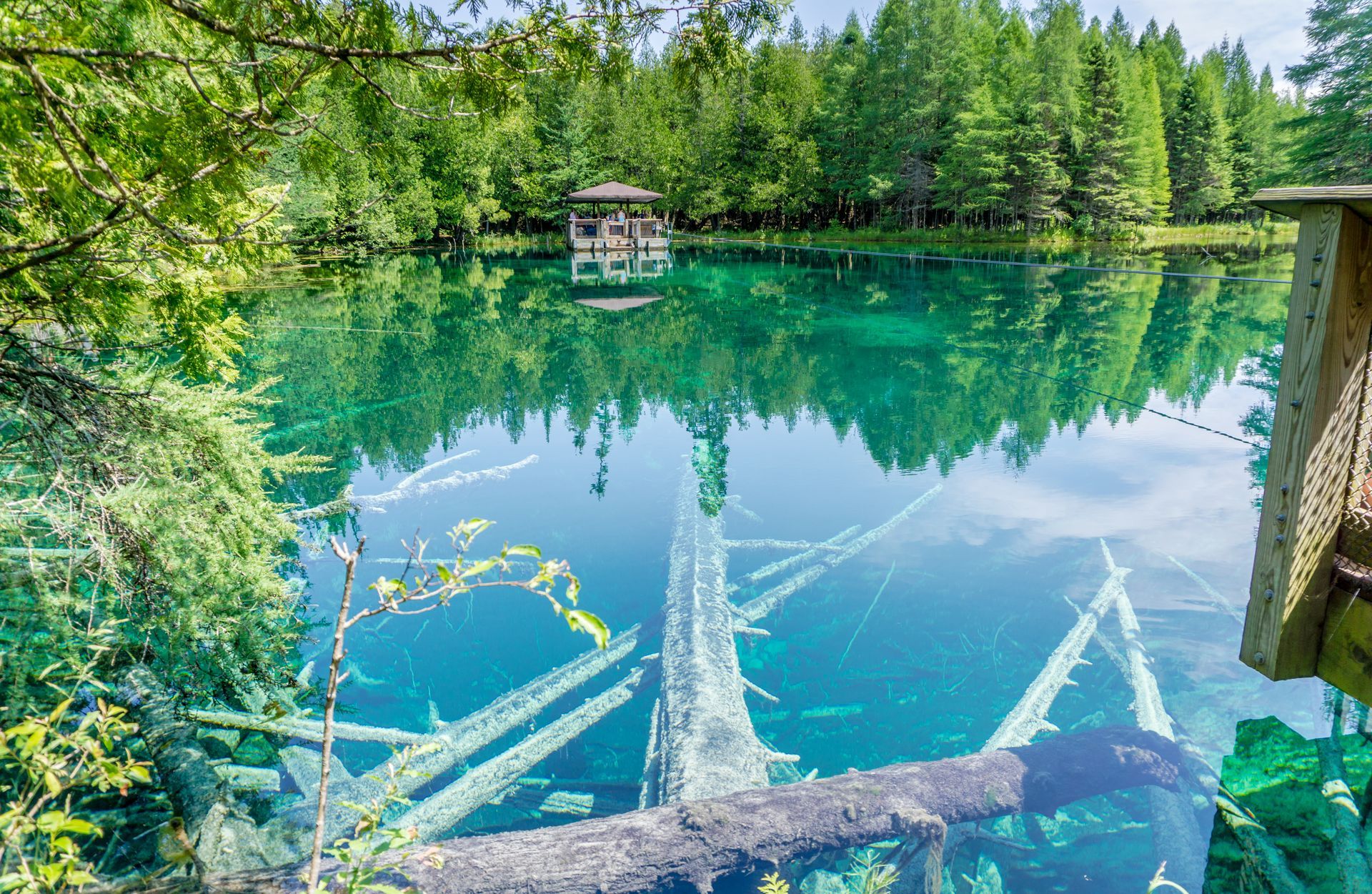
Kitch-iti-Kipi Springs: A Palm Book State Park Gem
Why Should You Visit Michigan?
Today we’re traveling into the Glove State and exploring the outdoor beauty of Michigan. Evergreen forests, islands, crystal lakes, starry skies, lighthouses, glacial lands, coastal dunes; Michigan’s diverse landscape has an outdoor experience for every traveler.
Let’s zoom in one of Michigan’s most popular and iconic outdoor spots; Palm Book State Park where the enchanting Kitch-iti-Kipi Springs is found.
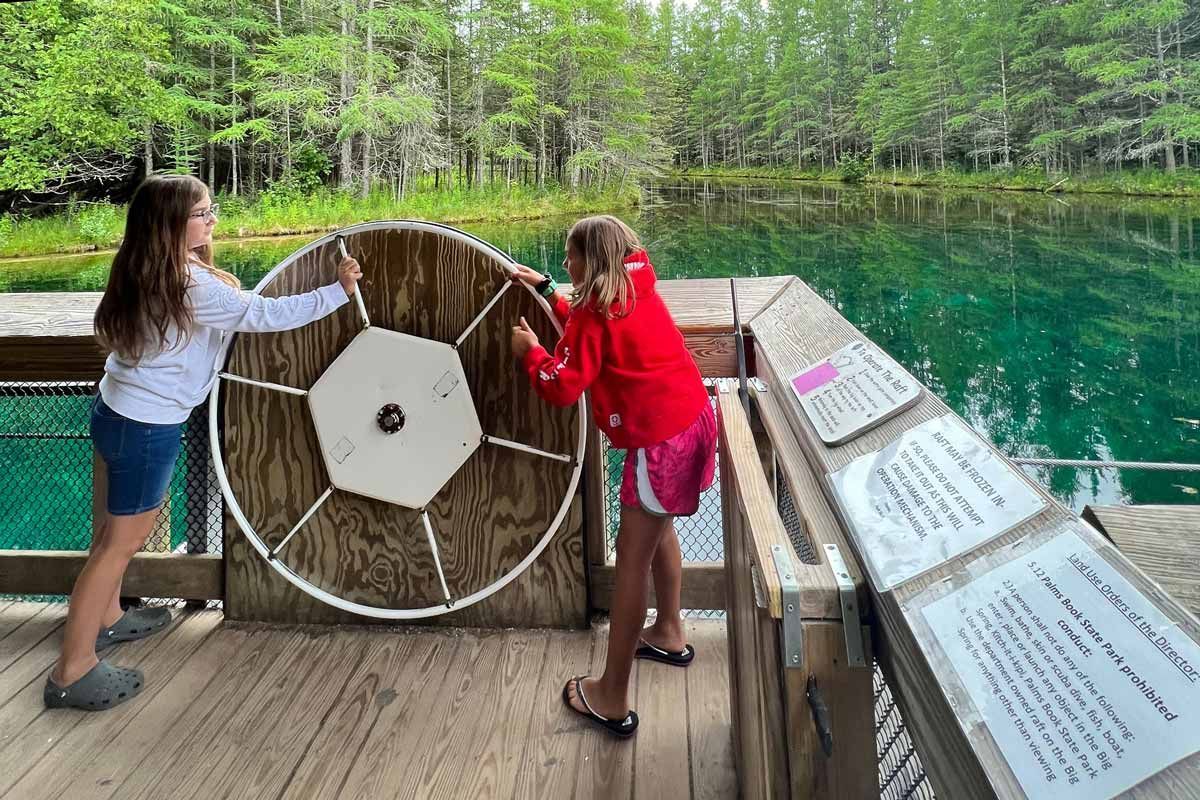
Palm Book State Park
Located in the Upper Peninsula, Palm Book State Park spans across a whopping 388 acres and is located roughly 12 miles west of Manistique just around Indian Lake.
Although you won’t find any palm trees here, the park’s namesake originates from the Palm Book Lumber Company, but more on that in a bit! If you're planning a visit to the area, heres some of the basic info:
Operating Hours:
The park is generally open year-round, though specific hours may vary by season so call ahead or check the park’s website for the most accurate information.
Accessibility:
Kitch-iti-kipi is accessible via an accessible boardwalk and observation raft, making it suitable for all visitors.
Facilities
The park offers basic amenities such as restrooms, picnic areas, and parking.
The Big Spring: Kitch iti Kipi
Kitchen Kippy? Kitsch-a-kippee? No, it’s not a serious medical condition from the 70s, but the name for the showstopper at Palm Book State Park. Often referred to as "The Big Spring”, Kitch-iti-Kipi is Michigan’s largest freshwater spring.
Unique Offerings: Natural spring displaying colorful shades of emerald, teal, and turquoise. Beautiful trout, underwater life and a constant motion of sand at the bottom.
Size & Depth:
The scenic spring spans 200 feet across and 40 feet deep. It gushes more than 10,000 gallons of water a minute from fissures in the limestone.
Temperature:
The continual flow of the spring remains at roughly 45 degrees Fahrenheit throughout the year.
One of the most unique things about the spring is that it almost never freezes. Park rangers have reported that every once in a while they’ll see a bit of ice forming on the bank. But, the spring typically never dips or climbs past its toe-curling 45-degree temperature, making it a rarity and phenomenon.

Visiting Kitch iti Kipi Springs
Upon arrival to the captivating springs, you’ll be welcomed by a self-operated observation raft, providing a close-up view of the bubbling underwater springs, bank-side vegetation, and if you’re lucky, a glimpse of aquatic life. In order to protect the spring and it’s inhabitants, the park does not allow swimming, bathing, fishing, entering or placing anything on the surface of the water.
Who Discovered Kitch-iti-Kipi?
The mysterious origins of the spring began in the 1700s-1800s when Anishinaabe people, whose homeland covered much of the Great Lakes region, occupied the area. Much of their spiritual beliefs and daily lives revolved around using the spring for fishing and spiritual guidance.
When European settlers arrived, many of these families left and John Bellaire came upon the hidden oasis in the 1920s. Bellaire wanted everyone to enjoy the spring, so he contacted The Palm Book Lumber Company. He convinced them to sell 90 acres of the land to the state of
Michigan for $10, (that's quite the deal).
The agreement specified that the land had to remain a public park.
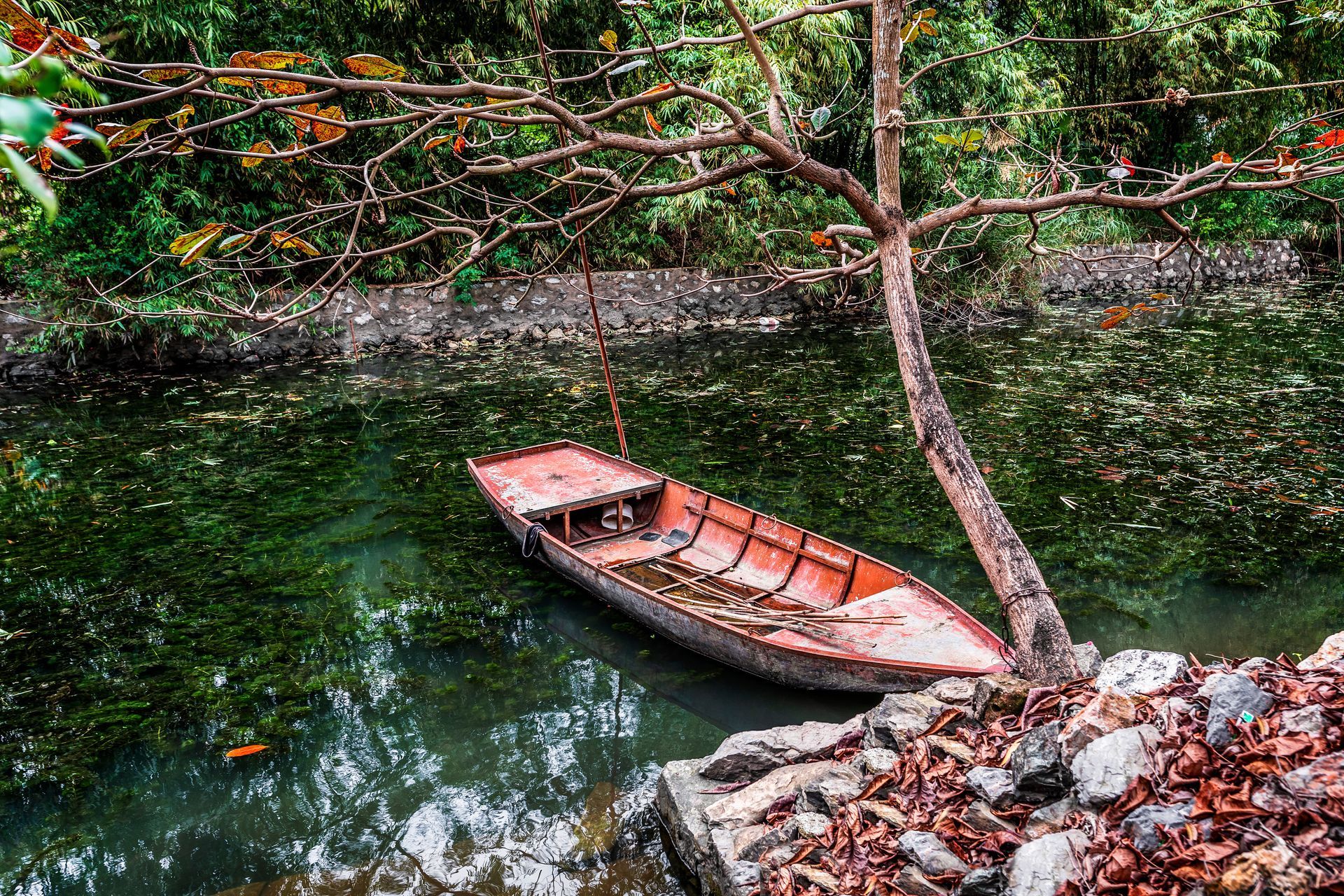
The Legend & Folklore of Kitch-iti-Kipi
Although we don’t know if any legend offers real truth, they’re fun to think about. One popular legend is based on a Romeo and Juliet-style tragedy. To prevent his daughter from being with her lover, a Chieftain drowned her suitor in the spring.
When the woman learned what her father did, she joined her lover in the spring. The legend goes that only certain people can see the outline of the two lovers in the water.
Another legend has a more sinister tone and the young chieftain was tricked by the young maiden. As a test of his devotion, she instructed him to take his canoe into the water and catch her as she leaped among the trees. When the young chieftain made it to the spring, his canoe overturned and he drowned. The maiden was never planning on meeting him and was actually back at the village laughing at his foolishness.
The Spring was named Kitch-iti-Kipi in memory of him. Now that you know the folklore, you might just wonder if the rolling sand and constant temperature is a geological phenomenon, a curse, or something more mystical.
Beyond the Park
Palms Book State Park offers ample opportunities to reconnect with nature outside of just seeing the spring. The park is adorned with verdant forests, meandering trails, and picnic areas perfect for a relaxing afternoon.
Beyond the park, the surrounding area is worth checking out. Palms Book is just 44 miles southeast of Munising, home to some of the Upper Peninsula's impressive waterfalls.
The charming city of Manistique is also a short drive away and we’ve already written a helpful guide to exploring downtown Manistique.
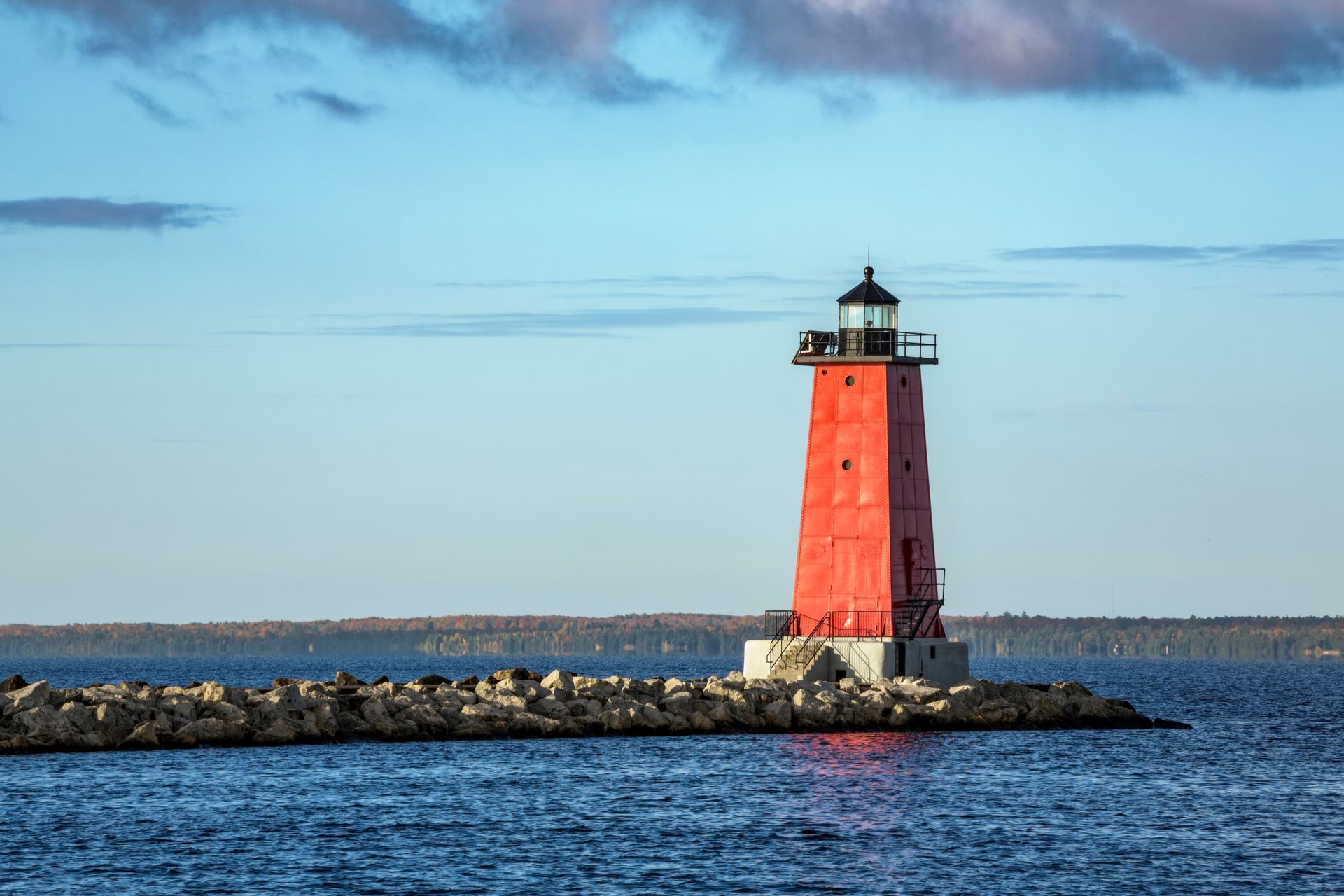
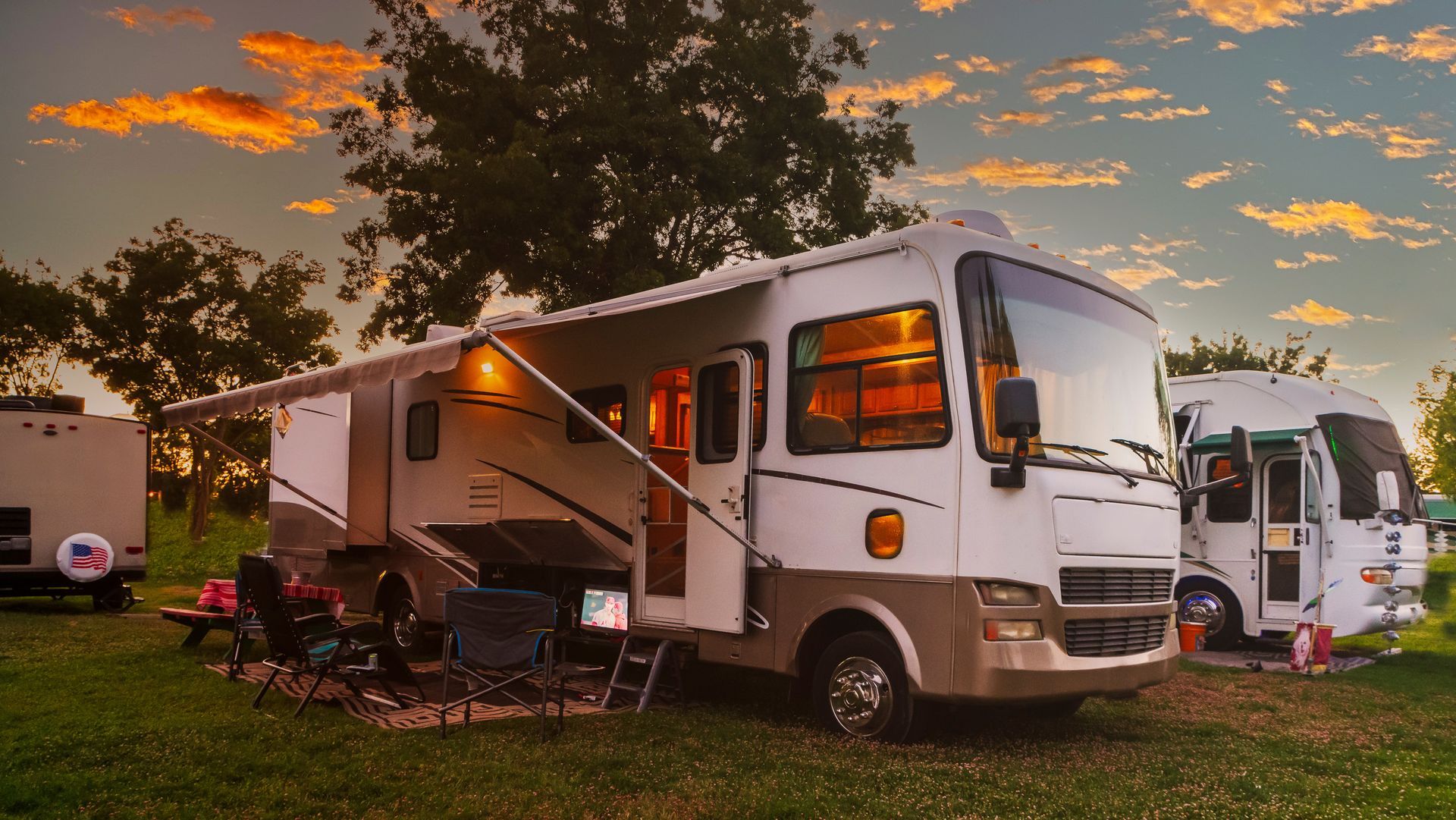
Stay at Indian Lake RV Resort and Campground
End your adventurous day with a stay at our modern resort and campground in Manistique, Michigan. We offer convenient amenities like spacious RV spots, full hookups, and tent camping.
Let us be your home away from home and stay with us at Indian lake RV Resort & Campground.


